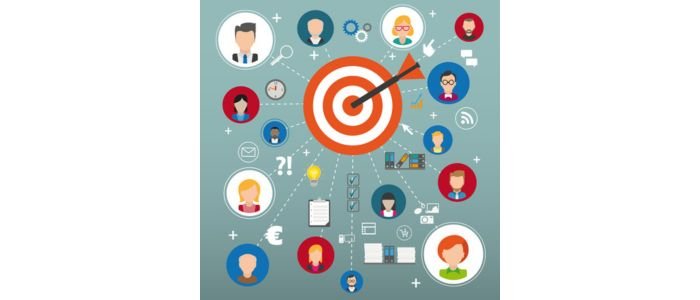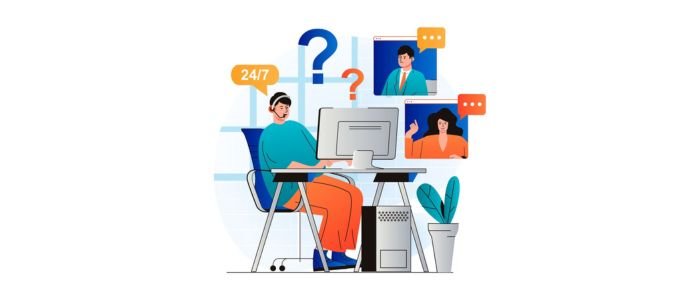How to Target High-Intent Clients for Inpatient Rehab?
When marketing for addiction treatment centers, high intent means individuals who are ready to take action and looking for a solution, like an inpatient rehab program. High-intent patients show clear buying signs that demonstrate commitment and urgency. These people usually search for specific terms on the internet. This behavior suggests that they have progressed to the awareness and research stage and are now at the decision-making level of the funnel. These prospects are motivated by instant need, like family intervention, health complications, legal issues, or recent relapse.
For addiction treatment centers, understanding intent is important because it molds the marketing strategy. High-intent clients expect clear information about admission processes, transparent pricing, and quick response. Delays can result in losing leads to competitors. By targeting and recognizing this segment with intent-powered campaigns, like call-only ads, optimized landing pages, and geo-targeted search campaigns, treatment facilities can enhance conversion rates.

Difference Between Clients Actively Seeking Inpatient Care vs. Casual Browsers
Distinguishing between clients looking for inpatient care and casual browsers is vital for designing an effective campaign. Clients seeking inpatient care actively show a strong buying intent. They search online with specificity and urgency. Such an audience is ready to make a decision within days or hours, driven by concerns like legal issues and health risks. On the other hand, casual browsers are people at the early stages of research. They could be exploring recovery stories, treatment types, or general information about addiction. Their search has broad queries.
For addiction treatment centers and marketers, this difference is an analysis. High-intent clients need fast and actionable solutions, and causal browsers benefit from nurturing via content marketing and educational resources. Real-time response systems, call-only ads, and optimized landing pages are required to capture and convert leads before they opt for another recovery center.
Key Characteristics of High-Intent Rehab Clients
Understanding what sets low and high-intent clients apart enables addiction treatment centers to customize their marketing strategies. These face unique pain points and exhibit specific behaviors that impact their decision-making process.
Decision-Making Factors & Common Pain Points
Urgency drives patients, but there are other factors that could influence whether they choose your recovery center:
- Privacy: Recovering from addiction is a sensitive process; patients want facilities to ensure discretion and confidentiality.
- Location: Proximity matters, especially for families looking for nearby recovery centers for support and easier visits.
- Insurance Coverage: Patients usually look for recovery centers that accept their insurance to reduce out-of-pocket costs.
- Cost: Patients fret about affordability, making insurance verification and transparent pricing crucial.
Understanding these pain points and behaviors allows recovery centers to optimize their outreach approaches to address patient concerns while providing clear and fast solutions.
Signs They are Ready to Commit
High-intent prospects show urgency via their online behavior. They search for action-oriented and specific keywords. Call behavior is also a strong signal of commitment. High-intent customers prefer calling instead of emailing since they want instant answers. They usually ask questions about admission timelines, cost, and bed availability. Form submissions with complete information, like preferred admission date, insurance provider, and contact number, show a readiness to move forward immediately.

Top 12 Strategies to Target Clients Actively Seeking Inpatient Rehab Services
Reaching patients who are looking for inpatient rehab services requires a profound understanding of the marketing tactics and their decision-making journey that best connects with them. These clients are ready to act, informed, and have urgency. To effectively engage with them, recovery centers should combine user-friendly resources, ethical practices, and strategic digital marketing. Here, you will explore how to navigate these prospects from their awareness to admissions.
1. Understanding the Client Journey
Before targeting high-intent patients, it is important to understand each stage they pass through for their path to healing.
✓Awareness
The patients or their loved ones realize that drug/substance abuse cannot be managed anymore. They start seeking information about addiction treatment options.
✓ Consideration
At this stage, the individual evaluates various treatment methods, like success rates, costs, and inpatient vs. outpatient care.
✓ Decision
The patients want to commit and are looking for a specific recovery center. They check for insurance coverage and compare amenities.
Identifying these stages allows advertisers to create relevant campaigns and content that meet patients where they stand in their journey.
2. Search Intent & Keyword Strategies
The basis of reaching high-intent individuals relies on PPC (pay-per-click) and SEO (search engine optimization) marketing strategies outlined to capture urgent queries.
✓ Use Negative Keywords to Filter Traffic
Including negative keywords in the campaign prevents ad spend waste by excluding irrelevant searches. This makes sure ads appear only for people who fit your ideal client profile.
✓ Leverage Long-Tail Keywords for Urgent Searches
Long-tail phrases and keywords that are often longer and more specific reveal strong intent. These searches allow you to target people closer to making a decision and show immediate needs.
✓ Target Action-Oriented Keywords
Patients who are ready to commit use high-intent keywords. This indicates that the individual has gone beyond the research phase and wants to take action.

3. Pay-Per-Call Marketing for High-Intent Clients
PPCall or pay-per-call marketing is the most effective strategy to engage prospects in crisis because it directly connects them with the addiction treatment center without any delays. In fact, pay-per-call campaigns achieve conversion rates of up to 30% in many industries, demonstrating their ability to convert searches into meaningful and direct connections.
✓ Why Inbound Calls Convert Better
Patients want to speak to an actual person who can guide them through the next steps, provide assurance, and answer questions immediately. A call-driven method creates urgency and trust.
✓ Using Pay-Per-Call Networks
Partnering with an esteemed pay-per-call network enables addiction treatment facilities to buy compliant and pre-qualified calls. These calls usually come from listings and targeted ads optimized for high-intent keywords.
✓ Compliance Consideration
Advertising in the addiction treatment space should comply with TCPA and HIPAA regulations at all costs to avoid legal penalties and protect client privacy. Implement a call tracking system and ensure that call scripts are respectful and sensitive.
4. Paid Advertising Strategies
Paid marketing campaigns allow addiction treatment facilities to appear at the top of search results when immediacy is at peak.
✓ Call-Only Campaigns
Instead of navigating people to a landing page, call-only ads directly connect them to your admissions staff. This capitalizes on their urgency and shortens the decision-making process.
✓ Google Ads for High-Intent Searches
Running search campaigns captures leads who are seeking a solution. Well-structured ad copies highlighting confidentiality, insurance acceptance, and fast admissions resonate with this audience.
✓ Geo-Targeting for Local Impact
Most individuals look for inpatient care and want nearby recovery centers. So ensure to geo-target ads that focus on local service areas to improve click-through rates and relevance.
5. GBP Optimization & Local SEO
High-intent leads add ‘near me’ in their online searches, which makes local optimization necessary.
✓ Reputation and Reviews
Positive reviews from previous clients and their families increase conversion rates and build credibility.
✓ Location Pages
Design dedicated landing pages for every region or city you serve to boost visibility in the local searches.
✓ GBP (Google Business Profile)
Make sure your profile is complete with precise contact details, 24/7 availability if applicable, and service details.
6. Using Content Marketing for Authority & Trust
Even the highest-intent leads require reassurance before making a decision. Well-designed content establishes trust.
✓ Conversion-Focused Content
Develop content that answers important questions, like:
- Step-by-step admission process
- Insurance verification and accepted providers
- Cost of inpatient rehab
- Video Content
Empathic and short videos explaining your recovery center’s features, staff credentials, and approach can build trust and reduce hesitation.
✓ Testimonials and Success Stories
Sharing client testimonials and recovery stories reinforces your credibility and builds emotional connections.
7. Social Media Targeting for Instant Engagement
Social media is an influential channel for reaching patients who have shown interest in rehab services.
✓ Ethical Crisis Messaging
Ads should be non-exploitative, solution-focused, and compassionate, suggesting support and hope instead of shame or fear.
✓ Retargeting Website Visitors
Remarketing campaigns remind those people who visited your addiction treatment website but did not convert, keeping your facility top of their mind.
✓ Interest and Behavior-Based Targeting
Platforms like Instagram and Facebook enable you to target people based on interests and behaviors related to mental health and recovery.
8. Referral Networks & Building Partnerships
Professional referrals and word-of-mouth are dominant ways to advertise addiction treatment centers.
✓ Community Organization
Partner with advocacy organizations or support groups to nourish referral pipelines.
✓ Healthcare and Therapists Providers
Create relationships with professionals who every now and then encounter people in need of inpatient care.
9. Niche Directory & Local Listings
Getting featured in specialized rehab directories and local directories enhances credibility and online visibility. Ensure these listings are consistent, accurate, and linked with your website for finer search rankings.

10. UX (User Experience) & Website Optimization
Your website is the first point of contact for high-intent patients. Make it conversion-focused and easy to navigate.
✓ 24*7 Support and Live Chat
Immediate communication can prevent lead loss.
✓ Clear CTA (Call-to-Action)
Add prominent CTA buttons to reduce complications in the decision-making process.
✓ Mobile-Friendly Design
Searches happen via smartphones, so mobile optimization is important.
11. Ethical & Compliance Marketing Practices
Advertising inpatient rehab services has to bear a lot of ethical responsibilities.
✓ Transparent Claims
Use compassionate and realistic messaging and never promise guaranteed results.
✓ HIPAA Compliance
Shield patients’ information across every marketing channel
✓ Respectful Communication
Focus on solutions, hope, and empowerment and avoid fear-based tactics.
12. Reputation Management
Getting admission to a rehab is a sensitive decision where trust is the foundation of everything. Manage your online reputation actively by addressing complaints with solutions and empathy, showcasing positive testimonials, and responding to reviews professionally and promptly.
The Role of Tracking & Fast Response in Rehab Marketing
High-intent rehab prospects expect clear guidance and instant communication. Even a few minutes can make a difference between a lost opportunity and an admission. Studies across various industries suggest that response times influence conversion rates directly. This impact is more pronounced since urgency and emotions drive decisions. When someone reaches out via live chat, form, or phone call, they are ready. Instant engagement shows professionalism, builds trust, and lowers the chances of withdrawal or relapse from the decision-making process.
Leverage Call Tracking & CRM for Better Conversion
A CRM (customer relationship management) system helps prioritize follow-ups, tracks interactions, and organizes leads. Adding call tracking software will enable your addiction treatment center to see which campaign is generating the most qualified calls. This ensures no lead slips via cracks and streamlines the admissions process.
Implementing Availability Around the Clock
Having AI-powered chatbots and 24/7 call centers is important. Such tools make sure that no lead goes unanswered, even during late nights and weekends. Round-the-clock support gives your recovery center a competitive advantage to get high-intent leads and demonstrate commitment.
- Chatbots route urgent requests to human agents, collect lead details, and handle initial queries.
- Call centers guide clients through the admission process, answer insurance questions, and provide real-time assistance.

A/B Testing for Continuous Improvement
A/B testing helps optimize ad formats, CTA buttons, headlines, and landing pages. For example, test a landing page with a prominent button and compare ad headlines. Data collected from such tests shows what reflects with the audience, increasing conversion rates and engagement.
Monitoring ROI Across Channels
Each marketing buck counts, especially in the competitive addiction treatment industry. By tracking ROI (return on investment) from every traffic source, you can allocate budgets and identify what is working.
How do These Tactics Target High-Intent Clients?
These strategies address the two main factors that influence high-intent clients: clarity and speed. When someone searches for inpatient rehab, they want to know more about admissions. A robust performing tracking combined with a fast response system ensures you reach those leads at their lowest. This refines your strategy for maximum impact.
Conclusion
Connecting with leads who need inpatient rehab is about being there when it matters the most. Every interaction and second counts that can make a difference between a lead slipping away or converting into an actual admission. This is why data-driven decisions, clear communication, and quick response times are lifelines of marketing strategies. By staying transparent, responsive, and visible, the addiction treatment center becomes a trusted guide. Lead with empathy at every step, listen to what your audience needs, and keep refining your approach. For rehab centers, success is measured by families restored and lives changed.
FAQs
How does pay-per-call marketing help rehab centers get more inpatient clients?
Pay-per-call connects your addiction treatment facility with high-intent and verified callers who are ready to start treatment. This significantly improves conversion rates.
How to generate high-quality leads for rehab centers?
Addiction treatment centers can generate high-quality leads for rehab centers via pay-per-call campaigns, local SEO, and referral partnerships.
How long should rehab centers take to respond to leads?
Ideally, rehab centers should take 5 minutes to maximize the chance of converting leads into admissions.


Leave a Reply